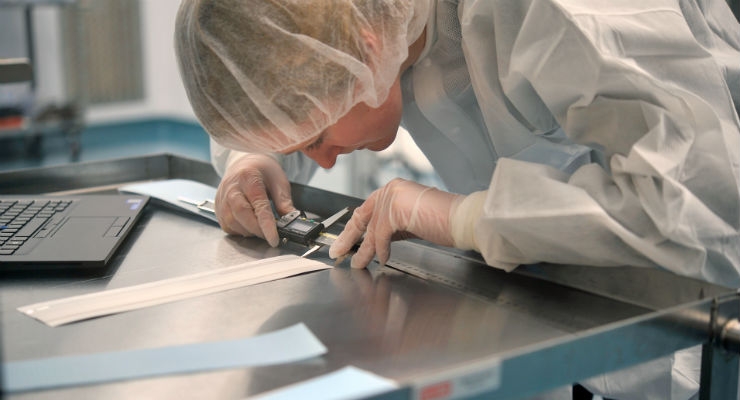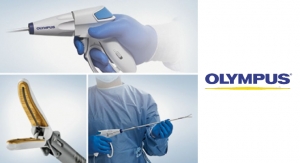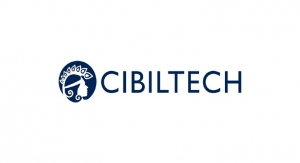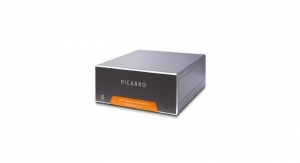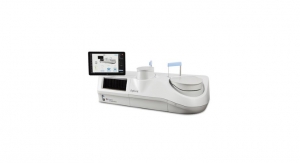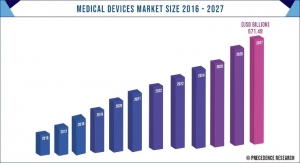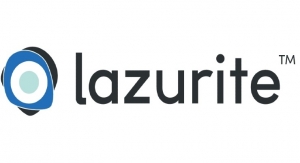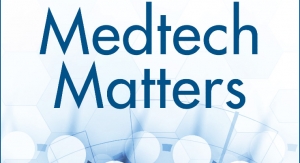Brianna Sporbert, VP of Engineering, Boyd Technologies01.18.19
In today’s evolving regulatory environment, supply chain transparency is a game-changing differentiator. Collaborating with manufacturing partners who have excellent supplier relationships and a deep understanding of materials can revolutionize the product development process. Even after a robust supply chain has been established, there are still hurdles in commercializing a medical device. Often, in an attempt to conserve resources, cutting corners in the design process leads to product failure. One way to mitigate this risk is to establish a comprehensive validation plan that does not compromise quality and reaps long-term cost savings.
Considerations for Raw Materials
Raw Materials Challenges
When it comes to medical devices, OEMs must be able to manufacture them with complete consistency of quality. Raw materials are often the biggest challenge to this consistency. Because of the risks that are associated with raw materials, governments and international regulating bodies are increasing regulations on the medical device industry.
The complexity of supply chains is another piece that adds risk into this evolving landscape. Traceability and the control of raw materials through the entire supply chain are becoming ever-more critical. Globalization and the consolidation of the supply chain need to be handled by medical device manufacturers and their trusted partners. This requires OEMs to develop trusting relationships with supply chain partners. It also necessitates them to demand more traceability for every raw material as it makes its way through the supply chain.
Regulations require medical device manufacturers to assess and mitigate risk throughout their entire processes, especially of raw materials. The recent trend to new regulations is that they are reaching further up into the supply chain more so than they ever have in the past. It is essential for device manufacturers to have the support and cooperation of the raw materials suppliers. The better your partnership is with your contract manufacturer, the more of a cohesive network this can become.
An approved supplier list can be an excellent tool for keeping track of supplier monitoring and the critical aspects of purchasing control, provided it is actively maintained. FDA requires the level of supplier assessment to be proportionate to the level of risk associated with the medical device. If you have a higher risk supplier who may be supplying a key component to your device, or providing a critical service such as sterilization, then your qualification process will be much more involved. To effectively deploy and implement these requirements, OEMs must both support and cooperate with their raw material suppliers.
Updates to Regulations
One of the most comprehensive ways the FDA has enhanced regulatory success is through consistency with international commercial standards. The International Organization for Standardization (ISO) standard specific to medical devices is ISO 13485. This management system was first published in 2003 and was updated in 2016.
ISO 13485: 2016 is now harmonized with FDA 21 CFR Part 820 and has explicit requirements for monitoring and re-evaluating suppliers. This has been a shift in focus from the 13485: 2003 version with the key concept focused on mitigating risk, specifically with the end user in mind. This makes the Quality Management System of suppliers critical. The new standard puts more emphasis on risk management before product realization. It also requires an increased focus on supplier selection criteria, including assessment of risks and regulatory requirements.
Both this voluntary standard and the FDA’s enforced regulation have explicit requirements for monitoring and re-evaluating suppliers. With the revision of the ISO standard, there has been a renewed emphasis on risk. The topic of risk was covered so little by the first publication of the standard that a formal definition of the term was not given. The newly published standard, however, defines risk and expands it to encompass more than just product realization. It states that a risk-based approach needs to be applied to:
It should be noted that the FDA is not alone in implementing more enforceable regulations. The EU has also decided to enhance regulatory oversight with Medical Device Regulation (EU) 2017/745 and In-Vitro Diagnostic Medical Devices Regulation (EU) 2017/746. While previous EU oversight was mainly accomplished through directives, these new regulations are changing Europe’s medical device industry dramatically and will continue to do so while they are being phased in by 2020 (EU MDR) and 2022 (EU IVDR). In short, governments around the world are beginning to recognize the importance of increasing and harmonizing the regulations surrounding medical device manufacturing. At the center of these regulation enhancements is the priority of effectively evaluating risk and responding appropriately to it.
Regulatory Considerations
Moving forward, OEMs must remain aware of the evolving regulations surrounding the raw materials they use and the suppliers who provide the materials. Risk assessment of these factors of medical device manufacturing will only continue to be prioritized by regulatory bodies in the industry and around the world.
Manufacturers will find that the best way to minimize risk surrounding the quality of raw materials and suppliers is to control the parameters of the manufacturing process as a whole. Working with a supplier who is willing to submit a Certificate of Analysis or Certificate of Conformance that is directly related to a specification that is in place helps to reduce that variability.
Supply Chain Transparency
The most effective method for navigating the challenges that come with supply chains is to increase transparency. When manufacturers have a bird’s-eye view of their vendors, their materials, and the logistics they can much more effectively follow and enforce the regulations that surround the manufacturing process. The following points are important factors to keep in mind to create better transparency:
Supplier Selection Best Practices
There is no substitute for consistently following the medical device manufacturing industry’s best practices for supplier approval. The industry leaders, as well as outside researchers and thought leaders, have created methods for identifying and utilizing the right suppliers. Five key best practices can and should be implemented:
When these practices are implemented simultaneously, device manufacturers will see that they can identify suppliers that will help them to create a robust, transparent supply chain; a supply chain that can help to manage risk when new medical devices are being introduced to the market.
Design For Manufacturability
While there are processes, systems, and tools that can provide increased transparency in the supply chain, these options will only take an OEM so far in managing risk and complying with regulations under enhanced scrutiny. The glue that will hold all of these transparency techniques together, and, work to strengthen them, is strong relationships.
OEMs must prioritize building long-lasting and trusting relationships with the contract manufacturers and raw material manufacturers. There are two substantial benefits to developing relationships across the supply chain. The first is that as the various partners build trust with each other, they can have increased ease in communication, as well as a higher likelihood that the partnership will continue over the long-term. Making suppliers a part of the quality assessment means it is much more likely that you will receive acceptable parts. This can be facilitated by involving them in the design process up front. Whenever you design a new product, an opportunity exists to collaborate with a raw materials manufacturer and being transparent with your suppliers upfront can lead to a more optimized design for manufacture.
The second benefit is that each partner in the supply chain, from the OEM to the contract manufacturer to the raw material manufacturer, has a unique set of knowledge and expertise regarding the use of materials. These differing perspectives and broader proficiencies, when combined, can considerably strengthen the supply chain, allowing for better risk management. It also allows the OEM to avoid over-engineering the medical device that they are designing. Because there is more in-depth knowledge about every component of the device, it works to reduce the complexity. This means that there is even more standardization with every device, alongside the uniformity to the supply chain as a whole.
When these benefits of strong supplier relationships are combined, it leads to better product design, as well as a design that is more manufacturable. The OEM can rely on a higher quality of raw materials from their suppliers. This higher quality comes from the fact that suppliers can provide a more accurate characterization of each raw material, which reduces variability. This then leads to a greater consistency when assembling the final product.
Additionally, because the OEM can have more confidence in quality assurance, they are able to build up their manufacturing processes to be both more robust and more controlled. This also extends to the analytics behind the manufacturing, enabling the OEM to get a more accurate picture of the lifespan of each product, from design to market introduction to order fulfillment.
Finally, a stronger relationship that contributes to more trust and better communication will lead to easier change. As new devices are designed, old devices are updated, manufacturing methods change, technology advances, and regulations evolve, OEMs and their supply chains are forced to change. Traditionally, change was not easy. It disrupted the current processes. When there is greater transparency in the supply chain and change notifications can be quickly provided, the organizations involved can adapt with less effort. The roadmap for bringing a device from concept to market becomes much more manageable for all involved.
Documentation
In any industry, documentation can be a bottleneck. In medical device manufacturing, collecting the right documents and information from suppliers is one of the most significant contributors to raw material qualification delays. As regulations tighten, these delays will only create more delays to ill-prepared manufacturers and suppliers.
To prevent these bottlenecks and provide a strong example of the necessary transparency, OEMs should clearly and expediently communicate what documentation they need from each supplier. This includes any documentation that supports raw material qualification and the information required for ongoing material management. However, device manufacturers should never assume that partners have agreed to provide these documents. They need to get verification—a commitment in writing, and possibly a plan from the provider that discloses what processes they are putting in place to guarantee they fulfill the documentation obligation. To provide a show of good faith, OEMs can request that they share quality agreement templates in the early phases of the partnership.
These quality agreement templates can only be created after the manufacturer and their suppliers discuss the nature of the quality agreement. This discussion must happen early on in the qualification process. If it occurs later, the manufacturer could fail to agree on the specifics around raw material quality. This means that the partnership cannot happen and both the manufacturer and the supplier have wasted time in discussions.
OEMs can save additional time, as well as facilitate the qualification process, by working with a supplier who already has documentation packages prepared and readily available.
Risk Mitigation Throughout the Development Process
The actual design process is formalized with the application of design controls. Feedback paths are required between each phase of the process and previous phases, representing the iterative nature of product development. Design controls also serve as a series of checks and balances and aid to identify and analyze risk throughout the design process, leading to a well-made product.
The Design Process
The most effective way to mitigate risk in the design process is to break the design process down, identify the various possible risks and develop methods for addressing each risk. This is done in an iterative fashion, evaluating both component parts as well as the device as a whole.
Design Controls
Design controls serve as checks and balances to the product development process and are codified in FDA 21 CFR Part 820.30. FDA uses a risk-based approach with the application and requirement for design controls. Design Controls also ensure that the device meets requirements and inputs, applicable standards, and performance criteria. At its core, the FDA’s design controls are comprehensive documentation from the design process. The regulator wants manufacturers to provide a thorough record of every phase in the design process. Therefore, design controls play an integral role throughout the medical device development process—with every step forward, design control documentation is present.
The strength that design controls bring to the medical device development process is that they offer checks and balances. Through this documentation, device manufacturers get a chance to identify, measure, analyze, evaluate, and mitigate potential risks that may be associated with the product. In the end, it is the design controls that allow medical devices to be as safe as possible.
Risk Management
Design controls and risk management in the product development process are closely related. Just as with design controls, risk management identifies, measures, analyzes, evaluates, and mitigates potential risk. Risk management starts with the design input requirements. As the design evolves, new risks may become evident. The risk management process is integrated into the design process to systematically identify and, when necessary, reduce these risks. This way, unacceptable risks can be identified and managed much earlier in the design process when changes are easier and less costly to make. The main difference is that the design controls and risk management look at device development from different perspectives. While design controls are proof of safety, risk management is used to develop the right tools to maintain device safety.
It is important for manufacturers to realize that their risk perspective is not necessarily the same as the risk perspectives of the contract manufacturers and suppliers. OEMs are concerned with the performance of the product. Contract manufacturers and suppliers, on the other hand, are concerned with the process. So, while the OEM’s primary concern is whether the product adversely affects the end user, the contract manufacturer and supplier’s concern is whether the product and components meet the acceptance criteria.
In an example for our case study, a specification called for rounded corners on a heat laminated bag. Rounded corners vs. non-radiused corners were of little consequence to the OEM both aesthetically or functionally, however, manufacturing rounded edges requires a different cutting method from non-radiused corners and carries a different level of risk. This isn’t something that was considered by the OEM in their initial design. This speaks to designing for manufacturability—a lot of the input from a contract manufacturer is the impact on design, the level of risk of failure when it is scaled up to production volumes, and how often that failure is going to be present.
In order to be effective at risk management, manufacturers also need to quantify the risk. There are four processes for quantifying risk:
Failure Modes And Effects Analysis (FMEA)
This failure analysis method identifies potential failure modes by assessing the functionalities, designs, and processes of subsystems and components of the device. Throughout the design process informal FMEAs can be done as brainstorm exercise; however, no formal FMEA is completed until the design is settled. Up until this point, it is important to think through where risk is introduced and propose changes in the design to mitigate that risk before the design output phase, and a formal FMEA is completed.
Risk Priority Number (RPN)
The RPN quantifies the severity of failure happening, how probable it is to occur, and the likelihood that the failure or issue would go undetected until end-user awareness. There is an RPN for every identified failure mode and the overall sample size. Values that go into it are the frequency, severity, and the detection rate. The FMEA identifies the current controls and the recommended actions to mitigate risk. If an RPN value is above a certain threshold, the validation team needs to make changes to the process in an attempt to lower the RPN. Then there is a reevaluation of the RPN number to ensure a reduction of the specific failure mode to an acceptable level.
Edge Of Failure (EOF)
Defined as the point in the design space where individual lots or batches will fail lot acceptance criteria. Edge of failure analysis is an essential start to the design space analysis. It helps to assess and define process risks and usually happens in the early stage of design.
Design Of Experiments (DOE)
A systematic method to determine the relationship between factors affecting a process and the output of that process. Designed Experiments are also powerful tools to achieve manufacturing cost savings by minimizing process variation and reducing rework, scrap, and the need for heightened inspection. In other words, it is used to find cause-and-effect relationships. Factorial experiments are versatile because many factors can be modified and studied at once. This information is needed to manage process inputs to optimize the output.
Conclusion
The increasing regulations surrounding the manufacturing of medical devices have the potential to create bottlenecks, slowing down the entire process from concept to production. Today, it is common for OEMs to have complex global supply chains and outsource design, product development, and manufacturing. At the end of the day, it is the device manufacturer who is ultimately responsible for product quality. However, these new regulations do not have to impede OEMs; building strong relationships with suppliers aids in creating a robust, transparent supply chain that helps to manage risk when bringing a new medical device to market.
Considerations for Raw Materials
Raw Materials Challenges
When it comes to medical devices, OEMs must be able to manufacture them with complete consistency of quality. Raw materials are often the biggest challenge to this consistency. Because of the risks that are associated with raw materials, governments and international regulating bodies are increasing regulations on the medical device industry.
The complexity of supply chains is another piece that adds risk into this evolving landscape. Traceability and the control of raw materials through the entire supply chain are becoming ever-more critical. Globalization and the consolidation of the supply chain need to be handled by medical device manufacturers and their trusted partners. This requires OEMs to develop trusting relationships with supply chain partners. It also necessitates them to demand more traceability for every raw material as it makes its way through the supply chain.
Regulations require medical device manufacturers to assess and mitigate risk throughout their entire processes, especially of raw materials. The recent trend to new regulations is that they are reaching further up into the supply chain more so than they ever have in the past. It is essential for device manufacturers to have the support and cooperation of the raw materials suppliers. The better your partnership is with your contract manufacturer, the more of a cohesive network this can become.
An approved supplier list can be an excellent tool for keeping track of supplier monitoring and the critical aspects of purchasing control, provided it is actively maintained. FDA requires the level of supplier assessment to be proportionate to the level of risk associated with the medical device. If you have a higher risk supplier who may be supplying a key component to your device, or providing a critical service such as sterilization, then your qualification process will be much more involved. To effectively deploy and implement these requirements, OEMs must both support and cooperate with their raw material suppliers.
Updates to Regulations
One of the most comprehensive ways the FDA has enhanced regulatory success is through consistency with international commercial standards. The International Organization for Standardization (ISO) standard specific to medical devices is ISO 13485. This management system was first published in 2003 and was updated in 2016.
ISO 13485: 2016 is now harmonized with FDA 21 CFR Part 820 and has explicit requirements for monitoring and re-evaluating suppliers. This has been a shift in focus from the 13485: 2003 version with the key concept focused on mitigating risk, specifically with the end user in mind. This makes the Quality Management System of suppliers critical. The new standard puts more emphasis on risk management before product realization. It also requires an increased focus on supplier selection criteria, including assessment of risks and regulatory requirements.
Both this voluntary standard and the FDA’s enforced regulation have explicit requirements for monitoring and re-evaluating suppliers. With the revision of the ISO standard, there has been a renewed emphasis on risk. The topic of risk was covered so little by the first publication of the standard that a formal definition of the term was not given. The newly published standard, however, defines risk and expands it to encompass more than just product realization. It states that a risk-based approach needs to be applied to:
- The quality management system
- Purchased product verification
- Outsourced processes
- Supplier criteria
- Training effectiveness verification
- Actions following unmet purchasing requirements
- Notifications of purchased product changes
It should be noted that the FDA is not alone in implementing more enforceable regulations. The EU has also decided to enhance regulatory oversight with Medical Device Regulation (EU) 2017/745 and In-Vitro Diagnostic Medical Devices Regulation (EU) 2017/746. While previous EU oversight was mainly accomplished through directives, these new regulations are changing Europe’s medical device industry dramatically and will continue to do so while they are being phased in by 2020 (EU MDR) and 2022 (EU IVDR). In short, governments around the world are beginning to recognize the importance of increasing and harmonizing the regulations surrounding medical device manufacturing. At the center of these regulation enhancements is the priority of effectively evaluating risk and responding appropriately to it.
Regulatory Considerations
Moving forward, OEMs must remain aware of the evolving regulations surrounding the raw materials they use and the suppliers who provide the materials. Risk assessment of these factors of medical device manufacturing will only continue to be prioritized by regulatory bodies in the industry and around the world.
Manufacturers will find that the best way to minimize risk surrounding the quality of raw materials and suppliers is to control the parameters of the manufacturing process as a whole. Working with a supplier who is willing to submit a Certificate of Analysis or Certificate of Conformance that is directly related to a specification that is in place helps to reduce that variability.
Supply Chain Transparency
The most effective method for navigating the challenges that come with supply chains is to increase transparency. When manufacturers have a bird’s-eye view of their vendors, their materials, and the logistics they can much more effectively follow and enforce the regulations that surround the manufacturing process. The following points are important factors to keep in mind to create better transparency:
Supplier Selection Best Practices
There is no substitute for consistently following the medical device manufacturing industry’s best practices for supplier approval. The industry leaders, as well as outside researchers and thought leaders, have created methods for identifying and utilizing the right suppliers. Five key best practices can and should be implemented:
- Evaluation Plan: Manufacturers need to develop a plan for evaluating and ranking their potential suppliers. This will require them to create a persona for their ideal supplier. It can consist of preferences, but it must include the need for full compliance with industry regulations and methods for ensuring transparency in the sourcing and movement of raw materials. One important note to keep in mind is that it will cost more money to reactively fix a problem in your supply chain than to proactively address it, even if it’s a more expensive option at the moment.
- Utilize Medical Device Industry Suppliers: The best option for any manufacturer is to work with suppliers that have experience in the medical device industry. This type of experience will indicate that they understand the regulatory environment and already have systems in place to assist manufacturers in their compliance.
- Measure and Monitor: After a supplier is identified, establish a process following qualification for measuring and monitoring supplier performance. Make it an ongoing process rather than a one-time event.
- Regular Audits: Performing regular audits in collaboration with measuring supplier performance continues to strengthen the supply chain. Manufacturers should regularly utilize an audit to verify whether the processes and systems that they have put in place in their supply chain are working.
- Supplier Engagement: Creating open lines of communication can transform the way supply chains operate. However, this engagement will provide much more valuable outcomes if manufacturers purposefully engage with suppliers who participate in a meaningful validation program. When suppliers are already involved in these programs, it means they are actively identifying issues before they turn into problems. In other words, they are reducing risk in the supply chain. These are the type of suppliers that manufacturers should be working with—those that value transparency.
When these practices are implemented simultaneously, device manufacturers will see that they can identify suppliers that will help them to create a robust, transparent supply chain; a supply chain that can help to manage risk when new medical devices are being introduced to the market.
Design For Manufacturability
While there are processes, systems, and tools that can provide increased transparency in the supply chain, these options will only take an OEM so far in managing risk and complying with regulations under enhanced scrutiny. The glue that will hold all of these transparency techniques together, and, work to strengthen them, is strong relationships.
OEMs must prioritize building long-lasting and trusting relationships with the contract manufacturers and raw material manufacturers. There are two substantial benefits to developing relationships across the supply chain. The first is that as the various partners build trust with each other, they can have increased ease in communication, as well as a higher likelihood that the partnership will continue over the long-term. Making suppliers a part of the quality assessment means it is much more likely that you will receive acceptable parts. This can be facilitated by involving them in the design process up front. Whenever you design a new product, an opportunity exists to collaborate with a raw materials manufacturer and being transparent with your suppliers upfront can lead to a more optimized design for manufacture.
The second benefit is that each partner in the supply chain, from the OEM to the contract manufacturer to the raw material manufacturer, has a unique set of knowledge and expertise regarding the use of materials. These differing perspectives and broader proficiencies, when combined, can considerably strengthen the supply chain, allowing for better risk management. It also allows the OEM to avoid over-engineering the medical device that they are designing. Because there is more in-depth knowledge about every component of the device, it works to reduce the complexity. This means that there is even more standardization with every device, alongside the uniformity to the supply chain as a whole.
When these benefits of strong supplier relationships are combined, it leads to better product design, as well as a design that is more manufacturable. The OEM can rely on a higher quality of raw materials from their suppliers. This higher quality comes from the fact that suppliers can provide a more accurate characterization of each raw material, which reduces variability. This then leads to a greater consistency when assembling the final product.
Additionally, because the OEM can have more confidence in quality assurance, they are able to build up their manufacturing processes to be both more robust and more controlled. This also extends to the analytics behind the manufacturing, enabling the OEM to get a more accurate picture of the lifespan of each product, from design to market introduction to order fulfillment.
Finally, a stronger relationship that contributes to more trust and better communication will lead to easier change. As new devices are designed, old devices are updated, manufacturing methods change, technology advances, and regulations evolve, OEMs and their supply chains are forced to change. Traditionally, change was not easy. It disrupted the current processes. When there is greater transparency in the supply chain and change notifications can be quickly provided, the organizations involved can adapt with less effort. The roadmap for bringing a device from concept to market becomes much more manageable for all involved.
Documentation
In any industry, documentation can be a bottleneck. In medical device manufacturing, collecting the right documents and information from suppliers is one of the most significant contributors to raw material qualification delays. As regulations tighten, these delays will only create more delays to ill-prepared manufacturers and suppliers.
To prevent these bottlenecks and provide a strong example of the necessary transparency, OEMs should clearly and expediently communicate what documentation they need from each supplier. This includes any documentation that supports raw material qualification and the information required for ongoing material management. However, device manufacturers should never assume that partners have agreed to provide these documents. They need to get verification—a commitment in writing, and possibly a plan from the provider that discloses what processes they are putting in place to guarantee they fulfill the documentation obligation. To provide a show of good faith, OEMs can request that they share quality agreement templates in the early phases of the partnership.
These quality agreement templates can only be created after the manufacturer and their suppliers discuss the nature of the quality agreement. This discussion must happen early on in the qualification process. If it occurs later, the manufacturer could fail to agree on the specifics around raw material quality. This means that the partnership cannot happen and both the manufacturer and the supplier have wasted time in discussions.
OEMs can save additional time, as well as facilitate the qualification process, by working with a supplier who already has documentation packages prepared and readily available.
Risk Mitigation Throughout the Development Process
The actual design process is formalized with the application of design controls. Feedback paths are required between each phase of the process and previous phases, representing the iterative nature of product development. Design controls also serve as a series of checks and balances and aid to identify and analyze risk throughout the design process, leading to a well-made product.
The Design Process
The most effective way to mitigate risk in the design process is to break the design process down, identify the various possible risks and develop methods for addressing each risk. This is done in an iterative fashion, evaluating both component parts as well as the device as a whole.
- User Needs: An OEM conducts research and interviews to identify a need or a potential opportunity in the market.
- Design and Development Planning: After a need or opportunity is identified, the OEM develops a guiding map for the potential device. It can be altered and updated as needed but acts as the project charter.
- Design Input: This is the translation of user needs into product specifications, including product specifications, biocompatibility, and labeling requirements. This is the most intensive part of the entire process where an actionable specification is created out of an identified need.
- Design Process: This phase is iterative, with feasibility trials completed and the physical product conceptualized. CAD software can be used for virtual designs, prototypes are assembled by hand, and the device is tested to analyze whether it can achieve the required specifications. This phase is ongoing and usually comes to an end after design output and verification.
- Design Output: This is the documentation heavy phase. At the completion of design output, the preliminary documentation for the Design History File (DHF) & Device Master Record (DMR) has been established.
- Verification: This phase confirms that the device meets the identified specifications. It occurs in parallel with design output.
- Design Review: A good example of when design review occurs would be following the verification phase. It is the go/no-go to starting validation. Design reviews are a big milestone and occur at the completion of each phase of the design process.
- Design Validation: This stage proves safety and efficacy. It is usually completed in the form of clinical trials. The contract manufacturer may support those clinical trials by producing product to be used.
- Process Validation: Provides objective evidence that a manufacturing process effectively and consistently produces a product that meets acceptance criteria within the stated range of process parameters. Although this one section seems simplistic, it is a very time-consuming part of the process and happens in combination with design transfer.
- Design Transfer: Combines design output and validation phases to facilitate a smooth transition from development to commercial manufacturing.
- Medical Device: The first commercial lot produced in the real manufacturing environment with the operators who will be manufacturing the product.
Design Controls
Design controls serve as checks and balances to the product development process and are codified in FDA 21 CFR Part 820.30. FDA uses a risk-based approach with the application and requirement for design controls. Design Controls also ensure that the device meets requirements and inputs, applicable standards, and performance criteria. At its core, the FDA’s design controls are comprehensive documentation from the design process. The regulator wants manufacturers to provide a thorough record of every phase in the design process. Therefore, design controls play an integral role throughout the medical device development process—with every step forward, design control documentation is present.
The strength that design controls bring to the medical device development process is that they offer checks and balances. Through this documentation, device manufacturers get a chance to identify, measure, analyze, evaluate, and mitigate potential risks that may be associated with the product. In the end, it is the design controls that allow medical devices to be as safe as possible.
Risk Management
Design controls and risk management in the product development process are closely related. Just as with design controls, risk management identifies, measures, analyzes, evaluates, and mitigates potential risk. Risk management starts with the design input requirements. As the design evolves, new risks may become evident. The risk management process is integrated into the design process to systematically identify and, when necessary, reduce these risks. This way, unacceptable risks can be identified and managed much earlier in the design process when changes are easier and less costly to make. The main difference is that the design controls and risk management look at device development from different perspectives. While design controls are proof of safety, risk management is used to develop the right tools to maintain device safety.
It is important for manufacturers to realize that their risk perspective is not necessarily the same as the risk perspectives of the contract manufacturers and suppliers. OEMs are concerned with the performance of the product. Contract manufacturers and suppliers, on the other hand, are concerned with the process. So, while the OEM’s primary concern is whether the product adversely affects the end user, the contract manufacturer and supplier’s concern is whether the product and components meet the acceptance criteria.
In an example for our case study, a specification called for rounded corners on a heat laminated bag. Rounded corners vs. non-radiused corners were of little consequence to the OEM both aesthetically or functionally, however, manufacturing rounded edges requires a different cutting method from non-radiused corners and carries a different level of risk. This isn’t something that was considered by the OEM in their initial design. This speaks to designing for manufacturability—a lot of the input from a contract manufacturer is the impact on design, the level of risk of failure when it is scaled up to production volumes, and how often that failure is going to be present.
In order to be effective at risk management, manufacturers also need to quantify the risk. There are four processes for quantifying risk:
Failure Modes And Effects Analysis (FMEA)
This failure analysis method identifies potential failure modes by assessing the functionalities, designs, and processes of subsystems and components of the device. Throughout the design process informal FMEAs can be done as brainstorm exercise; however, no formal FMEA is completed until the design is settled. Up until this point, it is important to think through where risk is introduced and propose changes in the design to mitigate that risk before the design output phase, and a formal FMEA is completed.
Risk Priority Number (RPN)
The RPN quantifies the severity of failure happening, how probable it is to occur, and the likelihood that the failure or issue would go undetected until end-user awareness. There is an RPN for every identified failure mode and the overall sample size. Values that go into it are the frequency, severity, and the detection rate. The FMEA identifies the current controls and the recommended actions to mitigate risk. If an RPN value is above a certain threshold, the validation team needs to make changes to the process in an attempt to lower the RPN. Then there is a reevaluation of the RPN number to ensure a reduction of the specific failure mode to an acceptable level.
Edge Of Failure (EOF)
Defined as the point in the design space where individual lots or batches will fail lot acceptance criteria. Edge of failure analysis is an essential start to the design space analysis. It helps to assess and define process risks and usually happens in the early stage of design.
Design Of Experiments (DOE)
A systematic method to determine the relationship between factors affecting a process and the output of that process. Designed Experiments are also powerful tools to achieve manufacturing cost savings by minimizing process variation and reducing rework, scrap, and the need for heightened inspection. In other words, it is used to find cause-and-effect relationships. Factorial experiments are versatile because many factors can be modified and studied at once. This information is needed to manage process inputs to optimize the output.
Conclusion
The increasing regulations surrounding the manufacturing of medical devices have the potential to create bottlenecks, slowing down the entire process from concept to production. Today, it is common for OEMs to have complex global supply chains and outsource design, product development, and manufacturing. At the end of the day, it is the device manufacturer who is ultimately responsible for product quality. However, these new regulations do not have to impede OEMs; building strong relationships with suppliers aids in creating a robust, transparent supply chain that helps to manage risk when bringing a new medical device to market.



